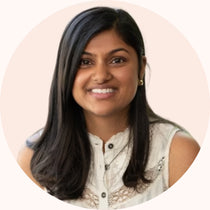Understanding Bile Salt Malabsorption: Symptoms and Treatments
Authors:

Ashley Palmer
Nutritional Therapy Practitioner, Health & Wellness Expert
Key Takeaways:
Table of Contents:
What Is Bile Salt Malabsorption?
Bile salt malabsorption (BSM), also known as bile acid diarrhea, is a condition where bile acids are not properly reabsorbed in the small intestine. This leads to an excess of bile acids entering the colon, causing diarrhea and other gastrointestinal symptoms such as bloating, cramping, urgency, and frequent bowel movements. Bile acids are crucial for digesting fats and absorbing fat-soluble vitamins (A, D, E, and K). When their reabsorption is impaired, it disrupts normal digestive processes, often resulting in fatty stools (steatorrhea), nutrient deficiencies, and ongoing digestive discomfort.
Causes of Bile Salt Malabsorption
Liver and Gallbladder Dysfunction
The liver produces bile acids, which are stored in the gallbladder and released into the small intestine during digestion. Liver diseases such as cirrhosis or hepatitis can impair bile acid production, while gallbladder issues like gallstones can obstruct bile flow, both leading to BSM.
Small Intestine Disorders and Resection
Diseases affecting the terminal ileum—the last part of the small intestine—such as Crohn's disease, or surgical removal of this section, can significantly reduce bile acid reabsorption. This results in more bile acids reaching the colon, causing diarrhea.
Overproduction or Poor Reabsorption of Bile Salts
In some cases, the body produces excess bile acids, or the reabsorption process is inefficient, leading to an overflow into the colon. This can be due to idiopathic reasons or conditions like irritable bowel syndrome (IBS).
Common Symptoms of Bile Salt Malabsorption
Chronic Diarrhea and Digestive Discomfort
Persistent diarrhea is the hallmark symptom of BSM. The presence of excess bile acids in the colon stimulates water secretion, leading to watery stools and frequent bowel movements.
Fatty Stools and Nutrient Deficiencies
Malabsorption of fats due to inadequate bile acid function can result in steatorrhea—pale, bulky, and foul-smelling stools. Since fat-soluble vitamins live in fat, this malabsorption could have a ramification of health issues.
Bloating, Cramping, and Gut Irritation
The irritation caused by bile acids in the colon can lead to abdominal bloating, cramping, and general discomfort, often mimicking symptoms of other gastrointestinal disorders.
How Is Bile Salt Malabsorption Diagnosed?
Diagnosing BSM involves a combination of clinical evaluation and specialized tests:
-
SeHCAT Scan: A nuclear medicine test measuring bile acid retention.
-
Blood Tests: Assessing levels of 7α-hydroxy-4-cholesten-3-one, a marker of bile acid synthesis.
-
Stool Tests: Evaluating fat content to detect steatorrhea.
-
Response to Bile Acid Binders: Improvement of symptoms upon treatment can also aid in diagnosis.
Treatment Options for Bile Salt Malabsorption
Dietary Changes to Improve Bile Salt Regulation
Adopting a low-fat diet can reduce the stimulus for bile acid production, alleviating symptoms. Incorporating soluble fibers like psyllium husk can bind bile acids in the intestine, reducing their irritative effects on the colon.
Medications and Bile Acid Binders
Cholestyramine and colesevelam are bile acid sequestrants that bind excess bile acids in the intestine, reducing the risk of causing diarrhea. These medications are often effective but may have side effects like bloating and constipation.
Supplements That Support Digestion and Liver Health
Tauroursodeoxycholic Acid (TUDCA) is a bile acid derivative that has shown promise in supporting liver function and improving bile acid metabolism. Research indicates that TUDCA can:
-
Enhance Liver Enzyme Profiles: TUDCA supplementation has been shown to significantly lower liver enzymes such as AST and ALT, indicating improved liver function.
-
Improve Insulin Sensitivity: According to a study, 15-day treatment with TUDCA helped restore normal insulin levels in obese mice by boosting the liver's ability to clear insulin—suggesting TUDCA could help reduce high insulin levels linked to obesity.
-
Alleviate Endoplasmic Reticulum Stress: TUDCA acts as a chemical chaperone, reducing stress in the endoplasmic reticulum. By alleviating ER stress, TUDCA helps maintain cellular homeostasis, supports liver cell function, and protects against conditions such as insulin resistance, fatty liver disease, and inflammation—making it a valuable compound for promoting both liver health and overall metabolic balance.
-
Support Gut Health: Supporting gut health is crucial for liver health because the gut-liver axis allows direct communication via the portal vein, and a healthy gut—with a strong barrier and balanced microbiota—prevents harmful substances like toxins and inflammatory compounds from reaching and burdening the liver. TUDCA has been shown to positively influence gut microbiota composition, potentially helping to restore microbial balance, improve digestive function, and reduce inflammation.
These effects are important for proper bile acid absorption because they support the entire physiological network responsible for producing, recycling, and managing bile acids, which is highly dependent on liver function, metabolic balance, and gut integrity. For those considering TUDCA supplementation, BodyBio's TUDCA offers a high-quality option designed to support liver and digestive health.
Final Thoughts: Managing Bile Salt Malabsorption for Better Health
Bile salt malabsorption can significantly impact quality of life, but with proper diagnosis and a comprehensive treatment plan—including dietary modifications, medications, and supportive supplements like TUDCA—individuals can manage symptoms effectively and improve their digestive health.


